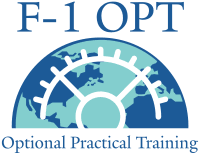POSTING DATE: July 23,  2018
Learn More About:
Immigration News & Updates eNewsletter ©  2011  - 2018Â
For questions about U.S. Residency, Green Cards and Immigration Visas, Visit our Website at: www.ImmigrateToday.com or  call our office at: (954) 382-5378
Check Out This Cool Stuff For Immigrants....
Immigration
Questions & Answers
This Week's Immigration NewsÂ
Question: Hi Ms. Pedersen, we met about my brother's case in 2016. My mom, a permanent resident filed I 130 for him (hes a minor - F2A category). The I 130 is approved april 2018 and case is at NVC. His visa is also now available based on the table USCIS says to use. Does this mean he is eligible to adjust status since he is here visiting this summer? We need your quick advise before we do anything with the nvc. Do you think the wait time would be shorter to continue with the consular processing or should we file I 485 and send the case back to USCIS, the wait time for that seems longer. Please Help! I will try to call you on Monday also.
Answer:Â That is a great question. You want to know if it is quicker to continue with consular processing for a minor child (in the F2A immigration category, for minor children of U.S. Residents) or to stay here in the U.S. and adjust his status to residency, since his priority date is current. Currently, it can be much quicker to go through consular processing abroad, rather than adjustment in the U.S.. Now that his priority date is current and the National Visa Center has sent the bills with notification that consular processing is beginning, it will likely only take between 2-4+ months from this point for him to be scheduled for his consular interview and receive his immigrant visa, as long as everything is done properly. Compare this with filing for residency while in the U.S. and adjusting his status here which can take up to 2 years!!!!!
So keep on the consular processing track and have your brother go home to complete the process, he must not overstay here in the U.S. Let us know if you want us to handle the NVC processing phase of his case so that everything is filed properly to ensure that there are no unnecessary delays.
!!! Danger Ahead !!!
 The End of Legal Immigration As We Know It!
Helpful Immigration Tips You Can Use...
  Immigration News & Updates         eNewsletter
        eNewsletter
In yet another blow to legal immigration, the USCIS just issued a new memorandum nearly as devastating as the recent NTA memo. Under a new policy beginning September 11, 2018, USCIS officers will no longer be required to issue a request for evidence or notice of intent to deny (NOID) on pending cases. This may not seem like such a big deal at first glance, however, taken together with the NTA memo, this ONE-TWO Punch represents a shocking development in the history of U.S. immigration which will forever change legal immigration as we know it!
For background, when an immigration application is filed with the USCIS, after receiving a receipt, the file eventually goes to an officer to process the case.Â
Immigration How To:
How Do I Know If I Need A Marriage or Fiancé Visa?
 Understanding The E-2 Treaty Investor Visa â Cheap AlternativeÂ
To The EB-5 Visa So Called "Million Dollar Visa"
The E-2 Treaty Investor Visa is a little known, but perfect visa option for many foreign investors who want to open a new business or buy an existing one in the U.S.. For qualifying investors, the E-2 is a low cost alternative to the $1 Million dollar EB-5 visa, which allows both the Investor and their immediate family members to live, work and attend school in the U.S., while operating their own business. When Immigrants hear âInvestor visaâ, they usually think of the high cost EB-5 Investor Visa, when in reality, a successful E-2 visa can be obtained for up to five years (renewable) by investing around $100,000 in your own business.Â
Overview of Spousal & Fiance Visas
There are several options for a U.S. Citizen to obtain U.S. Residency for a foreign spouse, here is a rundown of the options available:
Adjustment of Status in the U.S.:Â If the foreign spouse has a U.S. tourist visa or is already in the U.S. (having entered legally), the couple can marry and file the foreign spouseâs adjustment of status case inside the U.S. to obtain Residency (Green Card). After filing for adjustment of status, the foreign national spouse receives his or her Work Permit within about 180 days and about 15-24 months for the Residency interview and U.S. residency status.Â
Trump Administration Cracking Down On StudentsÂ
Entering The U.S. With OPT
Immigration regulations allow most F-1 students who have graduated with a college degree (Associates, Bachelors, Masters, PhD) in the U.S. to obtain a work permit in order to work for a U.S. employer in the field of the studentâs field of his or her degree. The program is called âoptional practical trainingâ (OPT) and provides employment authorization to the student for one year. During that year, student must work in a field related to their earned degree, for instance, a student with a Bachelorâs degree in engineering would not be authorized to work as a clerk in a grocery store. They are also authorized to travel abroad and use the OPT work permit in place of a visa to reenter the U.S..Â
This entails reviewing the forms and supporting documents to ensure that all the required evidence has been submitted and that the evidence clearly shows eligibility. Until now, in most cases, if an officer finds that one or more supporting documents are missing, or that more evidence is required in order to establish eligibility, he or she is required to issue a notice called âRequest For Evidenceâ (RFE) which lists the information or documents which the officer requires to in order to complete processing of the case. Depending upon the type of case, applicants usually receive between 30-87 days to provide the requested information. Under the new policy, officers will no longer be required to issue an RFE and instead, have the discretion to simply issue a denial of the case based on lack of âsufficient initial evidenceâ. Based up my estimates, likely 30% or more immigration applications submitted receive RFEâs, and perhaps some 80% or more for applications filed without an attorney.Â
If USCIS officers adhere to the new directives, beginning September 11, 2018 and beyond, a staggering number of cases will be denied without first giving applicants an opportunity to provide more evidence to prove eligibility. Not only will this mean the total loss of USCIS filing fees, but further, once the case is denied, if the individual is inside the U.S. and his or her status has expired, a Notice To Appear (NTA) in immigration court for removal from the U.S. will be issued!Â
This may become the new normal, file an immigration application and receive a denial, then NTA. It also appears that once a case is denied, the normal appeal or motion to reopen/reconsider process will not stop the NTA, so even if a case is appealed, the individual will still remain in removal proceedings.Â
Taken to its farthest possibilities, we are looking at the following scenarios:
Dwayne came with his mom to the U.S. years ago on tourist visa when he was 16 and the family overstayed. He is now 20 years old and marries his U.S. Citizen girlfriend Alice. They are just starting out and donât have much money, so they file Dwayneâs residency application themselves. They tried to understand what they were supposed to provide for the case, but did not quite get it exactly right, and failed to include the required form I-864 Affidavit of Support with the application. They figured that if anything was missing, the nice USCIS officer would let them know and guide them through the process. But unfortunately, they had no idea that the USCIS is not tasked with assisting them, it is more like an adversary, which instead reviews the case to determine whether they have filed it exactly as required and if not, the case will be denied. So, since they failed to file the required form I-864, rather than request it, the officer finds that they have failed to prove evidence to establish eligibility and Dwayneâs case is denied, they have lost the $1,760 filing fee AND a few months after the denial, they receive an NTA in the mail, telling Dwayne that he has been placed in Removal proceedings and must appear in immigration court once a date is set. A simple mistake results tragedy.
Jocelyn is a naturalized U.S. Citizen and sponsors her 18 year old daughter Denise who had come to the U.S. on an F-1 student visa a few years ago, but later quit school and has fallen out of status. They file Deniseâs residency case, unaware that Denise was required to provide a medical exam from a physician authorized by the USCIS. Similarly, Jocelyn filed the I-864 Affidavit of Support form using only a joint sponsor, never knowing that she was also required to file one herself, even though she did not make enough income to qualify. The officer adjudicating the case reviews the applications and supporting documentation, finds the deficiencies and denies the case. Denise receives an NTA.Â
Martin is in the U.S. working on an H-1B visa which expires in 60 days. His employer does not want to extend his visa, so he finds a new employer who files a new H-1B visa application on his behalf. As soon as he receives the receipt, he begins working for the new employer (which is allowed under the regulations). However, his new employer has not filed his case using 15 day premium processing (for the additional fee of $1,225) so Martinâs case takes 6 months for the USCIS to process it. The adjudicating officer does not believe that Martinâs job offer qualifies as an H-1B profession, and rather than issue the employer an RFE to provide more evidence of eligibility, the officer denies the case. Martinâs previous H-1B has expired, so he is issued an NTA.
Maria comes to the U.S. on vacation and after several months decides to change over to a student visa. She files the F-1 application and waits for it to be approved. She was given six months to stay in the U.S. when she entered, but since the F-1 application took over 8 months to process, she has fallen out of status during her case processing. Unfortunately, the official at the school she applied to made a mistake on the I-20 form she submitted with her F-1 application. So instead of issuing an RFE to give the school an opportunity to correct the error, the case is denied and Maria receives an NTA.
An individual who receives an NTA, but fails to remain in the U.S. to attend removal proceedings is inadmissible to the U.S. for five years. However, those who remain in the U.S. and for one year or more past their authorized stay, then leave, are barred from the U.S. for ten years, even if the immigration judge later grants âvoluntary departureâ, meaning, I agree to leave the U.S. voluntarily without the need for a removal hearing. So essentially even if an individual wants to follow the law and remain in the U.S. to attend removal hearings, the process itself, which could take a year or more, would cause the individual to accrue over one year in the U.S., then upon leaving the U.S. subject to a deportation order or voluntary departure, would still be barred from reentering for ten years. This is clearly a Machiavellian scheme devised by the Trump administration to put a strangle hold on legal immigration.
These are just a few of the numerous examples in which individuals who file immigration applications which would otherwise be approvable with additional documentation, instead receive denials and are forced into removal proceedings in immigration court. So what can be done to avoid these bad outcomes under Trump Administrationâs perverse policies? First and foremost, the most obvious safeguard is for individuals to avoid filing any immigration application unless they are absolutely certain they qualify for the benefits sought. I cannot stress enough how dangerous filing any application can potentially be for anyone inside the U.S. who is not in legal immigration status. This is especially true for residency petitions, including those for a spouse, parent or minor child of a U.S. Citizen. Donât even think about filing a case until you know what the exact requirements are and have each and every document required to prove your case.
Those in the U.S. in legal visa status needing to extend a visa should file the extension application as early as possible to avoid falling out of status, in case a denial is issued. For instance, for H-1B, L and E visas, renewal applications should be filed six months before expiration and 15 day premium processing should always be used. Denials of these and many other cases are on the rise, so no case is safe, not even renewals.Â
Whenever possible, applications including those for H-1B, L and E visas should not be filed for change or extension of status in the U.S., but instead for consular pickup. This way, if a case is denied, an NTA will likely not be issued. For H-1B work visa change of employer cases, workers should not begin working for the new employer until the H-1B visa is approved by the USCIS. That is the only way to guarantee that the worker does not fall out of status if the new H-1B application is denied.
Individuals who enter the U.S. on Tourist visas should avoid filing any application to request change or extension of status in the U.S., and those who want an f-1 student or other visa, are best served to request it at the U.S. consulate abroad. If you want to stay in the U.S. longer, leave the U.S. before your stay expires and come back in a few months later. If you love your U.S. visa, donât risk losing it.
We are entering a new era in immigration where the odds are being stacked against immigrants and legal immigration. All the safeguards to ensure that individuals maintain in legal immigration status have now been obliterated. Filing any immigration application puts the applicant at risk for loss of their cherished U.S. Tourist and now even deportation. So itâs more important than ever to seek professional immigration advice before proceeding with any immigration application so you understand the risks involved. Stay safe!
â Find out more about the whether or not you qualify for an immigration benefitÂ
before filing the case, by calling our office at: 954-382-5378.
Well now, as with most other immigration since Trump took office, the U.S. Customs and Border Protection (CBP) officers at U.S. ports of entry have begun to crack down on students entering the U.S. using their OPT cards. Under new directives, officers are now very frequently requiring that students reentering the U.S. provide documents to prove that the job they are returning to in the U.S. is directly related to their field of study, i.e. job title, have a detailed description of their job duties, name of their direct supervisor and other information related to their employment in the U.S..The best advice is for students to be prepared by having a copy of their I-20 showing their field of study, recent paystubs and letter from their employer which provides the relevant information about the position. Good luck!
USCIS Updates Work Authorization Request Form (I-765)Â
The USCIS has updated Form (I-765) Application for Employment Authorization. Beginning September 17, 2018, the USCIS will require that the new edition, datedÂ
05/31/18 be used and will reject applications made using earlier editions of this form. Check out the new I-765 form
Question: I read your newsletter yesterday about the new policy memorandum about filing any immigration application is the basis for deportation. You gave two examples under which this will affect an individual but does it affect a person that has an expired I-94 that recently got married and about to file for residency?Â
Answer: No, the NTA memo does not change the current situation where an individual entered the U.S. legally, but their status has expired. In that case, an NTA would only be issued if that individual filed a case with the USCIS and it was denied. So in your case, the fact that your I-94 has expired is not a basis for the issuance of an NTA, however, if your residency case is later denied, it would be. I hope this is helpful to you.
Question: I was in the us last year and found out about a cosmetology school that I wanted to go to. I applied and they accepted me but said I had to apply for a student visa at the american embassy before I could start the program. So I did and went to the interview and got denied, but not just that, they cancelled my visitor visa too! I am so upset! They asked me a bunch of questions about what relatives I have in the us and did I have a boyfriend. I told the truth that my mom lives in the us and I am dating a guy there in florida and we have been together for 2 years. That is when the officer refuse me and took my visa. She said I could reapply again later. They gave me a paper that said I was denied due to 214 or something. Is there something I can do now?
Answer:Â Visa denials under section 214(b) are becoming more and more common. A 214(b) is one of the most common types of visa denials, normally based upon the Consular Officerâs belief that the applicant has the âintent to immigrateâ to the U.S. 214(b) denials are usually issued when a foreign national is not able to convince the Consular Officer that he or she has âStrong Tiesâ to their home country which would likely compel the applicant to return home at the end of their visit and not stay in the U.S.. Demonstration of âStrong Tiesâ includes documents which prove that the applicant is employed, owns a home or other real estate and has close family members who reside in the home country.
Most foreign nationals mistakenly believe that the fact that they have family in the U.S. will work in their favor when applying for a U.S. Visitor Visa (B1/B2). However, contrary to belief, close relatives in the U.S. such as U.S. Citizen or Resident parents, spouses or children can have a very negative impact on an application, since the mere presence of such relatives in the U.S. tends to show that an applicant might be more prone to want to stay in the U.S.. Similarly, under Trump administration policies, cancellation of U.S. Tourist visas (B1/B2) is becoming a common occurrence when an individual applies for any other type of U.S. visa which is denied.Â
The best thing you can do is to reapply in the future, by convincing the officer that you intend to return home to a good job in cosmetology once you complete your studies. Another option, if your relationship with your U.S. boyfriend becomes serious enough for marriage, you might also consider a fiancée or spousal visa.
You can visit the State Department Website for information on the most common visa denial types:
A wide range of business types qualify under the E-2, including start-up, franchises and existing businesses. One of the only few requirements is that the business enterprise must be operated from a commercial location (not a home) and it must create new jobs or preserve the jobs of existing employees. However, not all business types qualify, specifically because some investments, for like those in real estate do not generate jobs. To qualify, an investor must be a national of one of the treaty countries on the State Department list that has an E-2 treaty with the U.S.. Dual nationality qualifies as well, for instance where a national of Venezuela would not qualify, but if he or she holds a Spanish or Italian passport as well, would.Â
You can find out which countries qualify for the coveted E-2 visa and more details about it,Â
by calling our office at: 954-382-5378.
When the foreign spouse does not have a U.S. Visa, there are only several options available:
Spousal Visa (Consular processing):Â In these cases, the couple gets married abroad and the U.S, Citizen files a spousal visa, which enables the foreign spouse to process through the Consulate abroad, which takes about 8 months. Â
Fiance Visa (K-1): Used to bring the Fiance to the U.S in order to get married and file for Residency. In years past, the K-1 Fiancée visa was the quickest way to bring a Fiance to the U.S. to avoid a long separation. However, currently, the K-1 visa can take nearly as long as spousal visa processing, so in many cases, it just as fast for the U.S. Citizen and foreign fiancée to marry abroad and go through spousal visa Consular processing. If the couple does opt to go the K-1 route, it takes about 7-8 months for visa issuance through the Consulate. Once the visa is stamped in the foreign Fiancéeâs passport, and entry is made into the U.S., he or she must marry the U.S. citizen sponsor and file for Adjustment of Status (âGreen Cardâ) within 180 days of entry into the U.S.. After filing for adjustment of status, the foreign national spouse receives his or her Work and Travel Permit within about 180 days and about 15-24 months for the Residency interview and U.S. residency status (Green Card). Importantly, the Fiancée visa is one of only a few types of visas in which the visa holder CANNOT change to another visa category, while inside the U.S.. The reason for this is that the Immigration wants to prevent individuals from using the Fiancée visa to enter the U.S. with the intent to change to another type of visa, instead of for marriage, as it is intended. Therefore, once a foreign national is inside the U.S., if he or she does not marry the U.S. citizen within the 90 day period, he or she is in illegal status. K-1 visa holders can ONLY obtain a Green Card by marrying the U.S. citizen who sponsored them for the Fiancée visa. If they marry any other U.S. citizen and apply for a Green Card, they will be denied. Â
You can find out more about marriage and fiancé visas by calling our office at: 954-382-5378.












